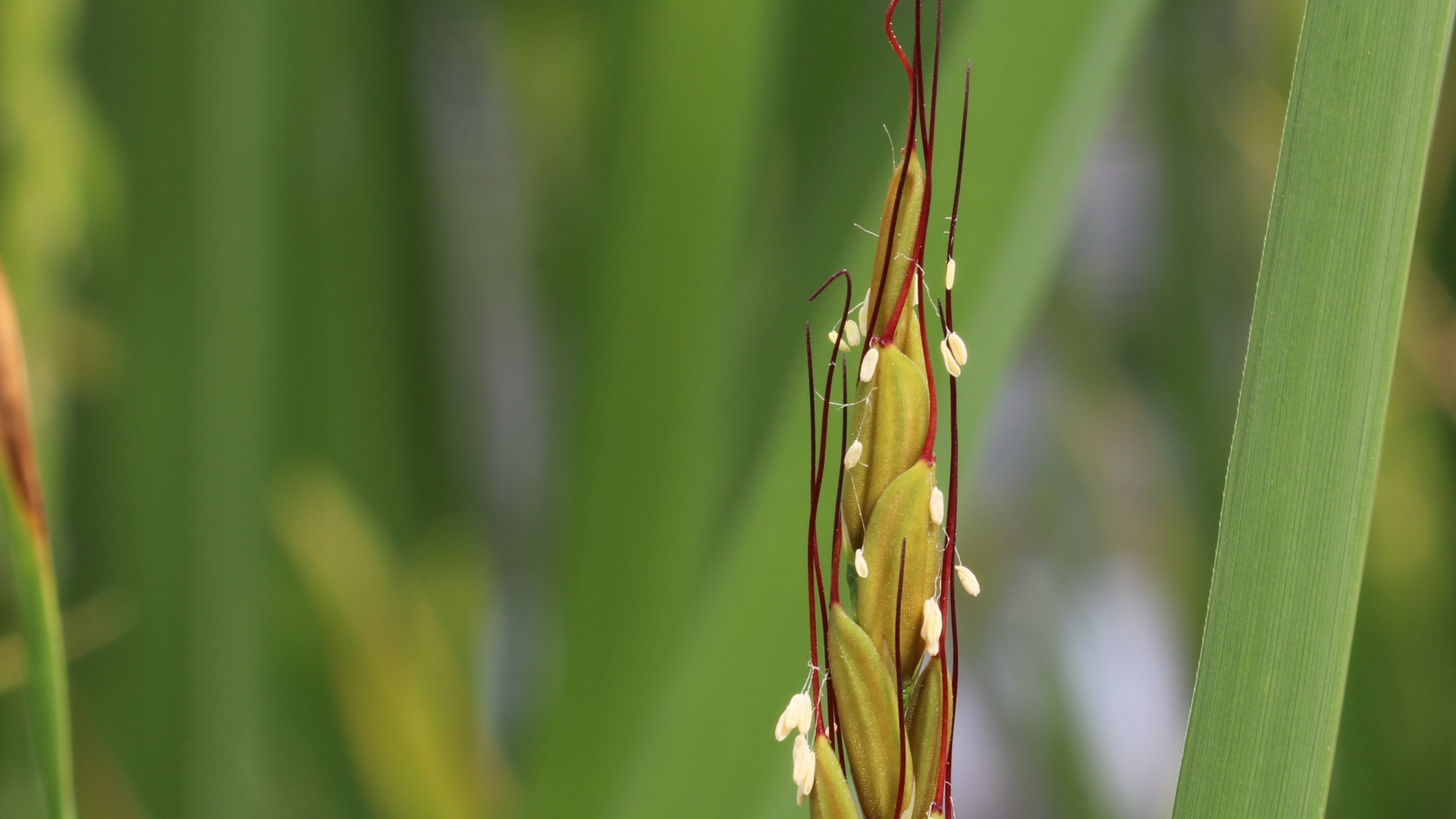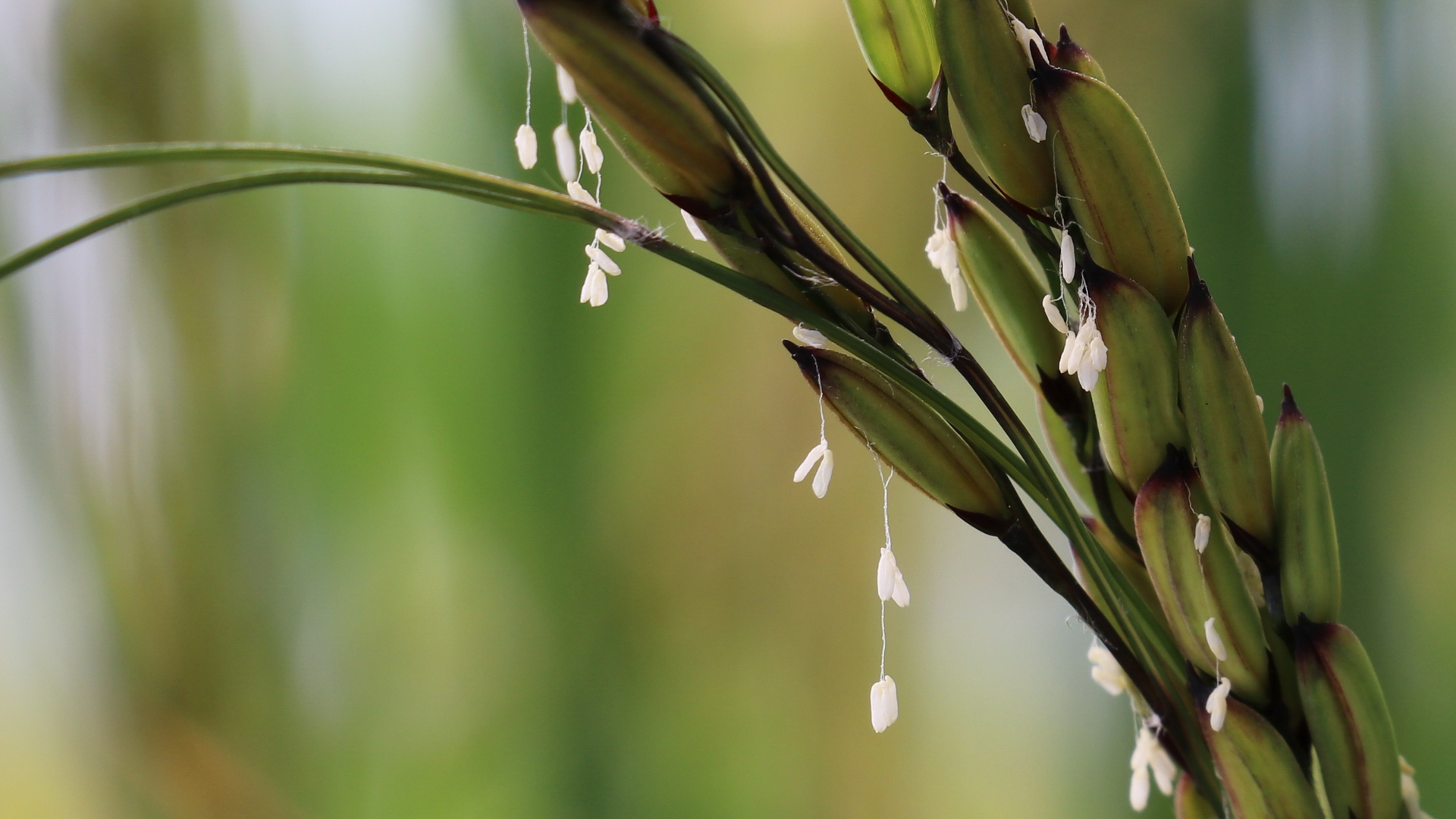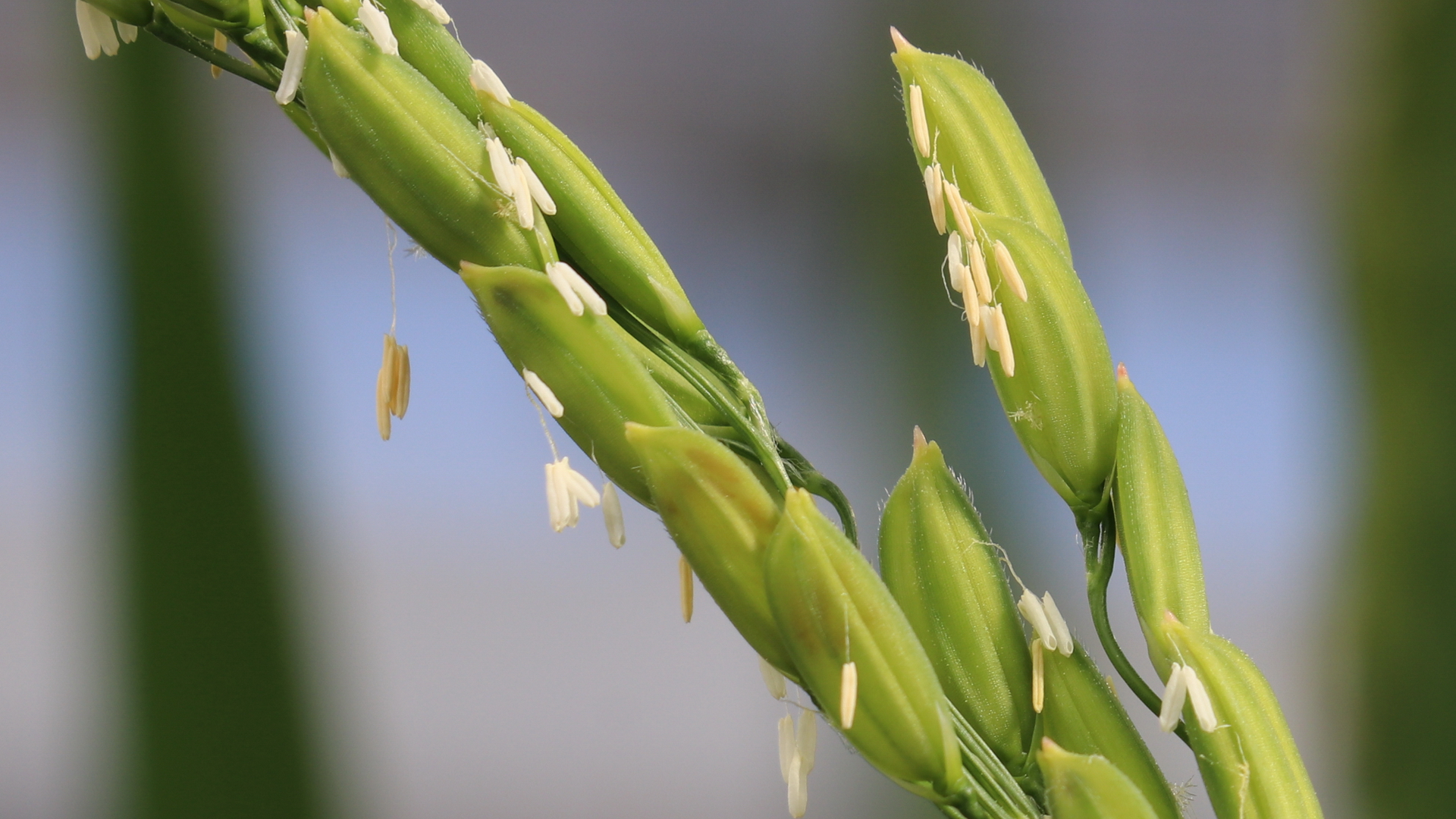Did you know that rice can have beautiful and diverse flowers?
Few people think of grasses as flowering plants. However, grasses belong to some of the most advanced (in evolutionary terms) flowering plants and are closely related to orchids.
Rice has been domesticated from wild species twice in the history of humans. Some 10,000 years ago, rice was first domesticated in Asia using Oryza rufipogon as progenitor. The selection for useful traits changed the domesticated rice to a degree where it is now considered a true species, Oryza sativa ('sativa' means edible in Latin). Only 2,000 years ago, rice was again domesticated in Africa and the strong selection also lead to a new species, Oryza glaberrima. This time, the wild species Oryza barthii was used by humans as selection material.
In all cases, humans strongly selected against undesirable traits such as strong seed dormancy, seed shattering and awns. Interestingly, some of these traits pop up in modern hybrids when scientist are trying to breed for e.g., drought tolerance, flood tolerance and salinity tolerance. Below, there some examples of the diversity in rice flowers that we have observed in our small collection of rice in our glasshouse.
You may also like to check out one of the older blog posts showing flowers of wild rice species, with this one from Oryza granulata, which is particularly nice.

NERICA-2 is an African hybrid with long awns. Awns represent an undesirable trait and has been removed by humans via extensive breeding over the past thousands of years.

The NERICA-1 hybrid is closely related to NERICA-2 but it is lacking the long awns; only small pointy buds remain.

The WABS-450 hybrid also has strongly reduced awns. However, all three rice hybrids have the characteristic stamens hanging from the flower. Grasses, including rice, are generally not pollinated by insects but relies on the wind to spread the pollen and this process is facilitated by the exterior stamens carrying the pollen.
Rice has been domesticated from wild species twice in the history of humans. Some 10,000 years ago, rice was first domesticated in Asia using Oryza rufipogon as progenitor. The selection for useful traits changed the domesticated rice to a degree where it is now considered a true species, Oryza sativa ('sativa' means edible in Latin). Only 2,000 years ago, rice was again domesticated in Africa and the strong selection also lead to a new species, Oryza glaberrima. This time, the wild species Oryza barthii was used by humans as selection material.
In all cases, humans strongly selected against undesirable traits such as strong seed dormancy, seed shattering and awns. Interestingly, some of these traits pop up in modern hybrids when scientist are trying to breed for e.g., drought tolerance, flood tolerance and salinity tolerance. Below, there some examples of the diversity in rice flowers that we have observed in our small collection of rice in our glasshouse.
You may also like to check out one of the older blog posts showing flowers of wild rice species, with this one from Oryza granulata, which is particularly nice.
NERICA-2 is an African hybrid with long awns. Awns represent an undesirable trait and has been removed by humans via extensive breeding over the past thousands of years.
The NERICA-1 hybrid is closely related to NERICA-2 but it is lacking the long awns; only small pointy buds remain.
The WABS-450 hybrid also has strongly reduced awns. However, all three rice hybrids have the characteristic stamens hanging from the flower. Grasses, including rice, are generally not pollinated by insects but relies on the wind to spread the pollen and this process is facilitated by the exterior stamens carrying the pollen.

